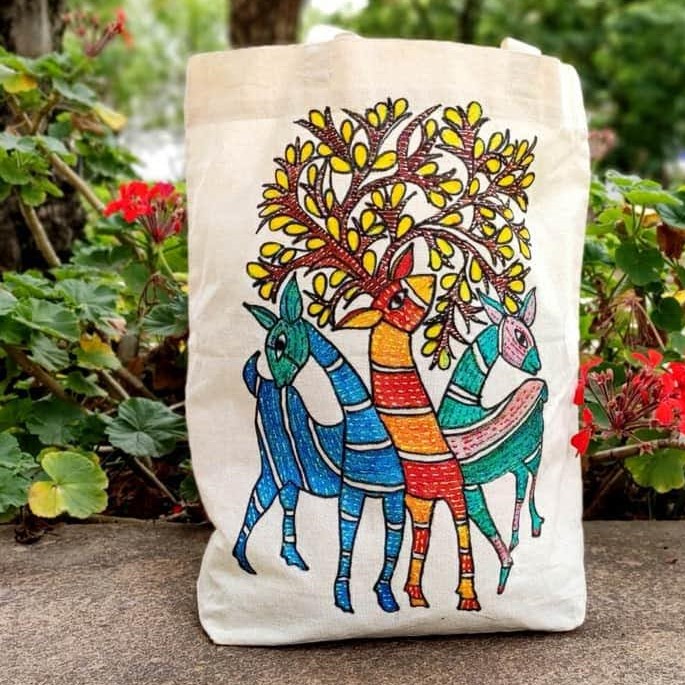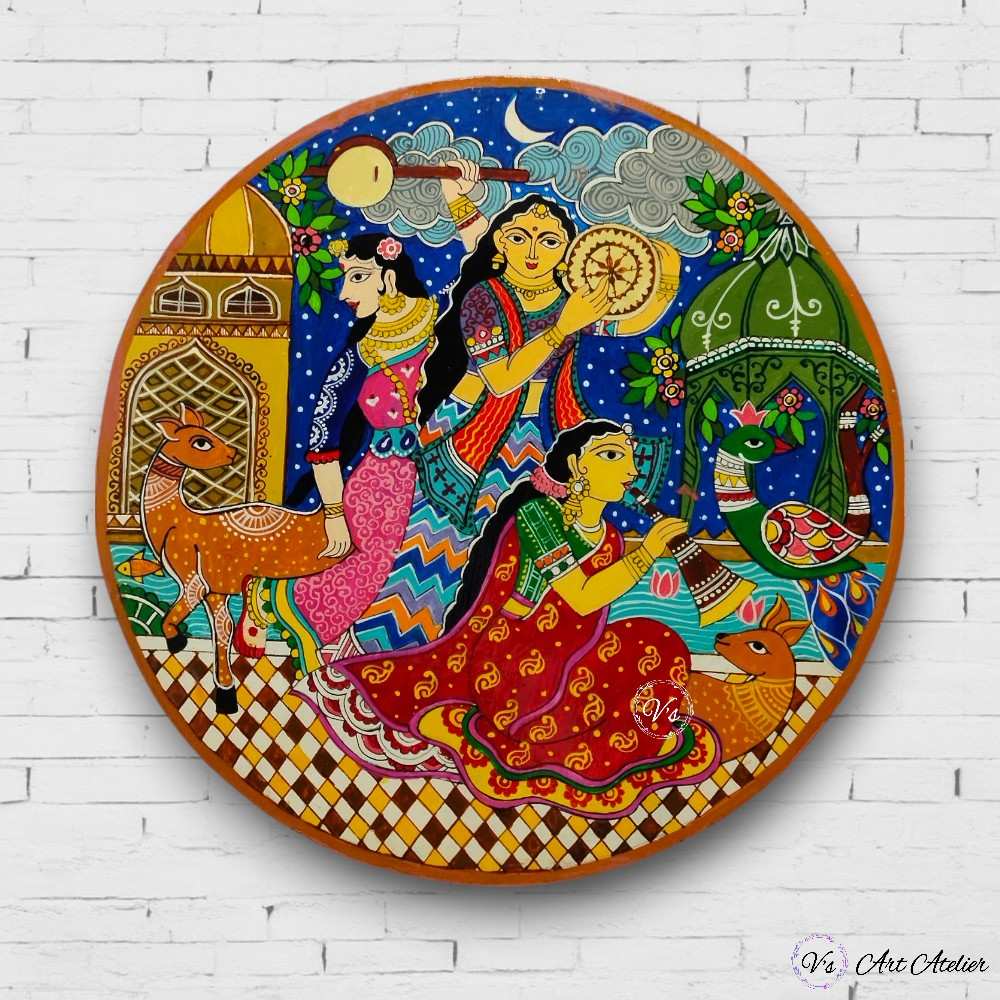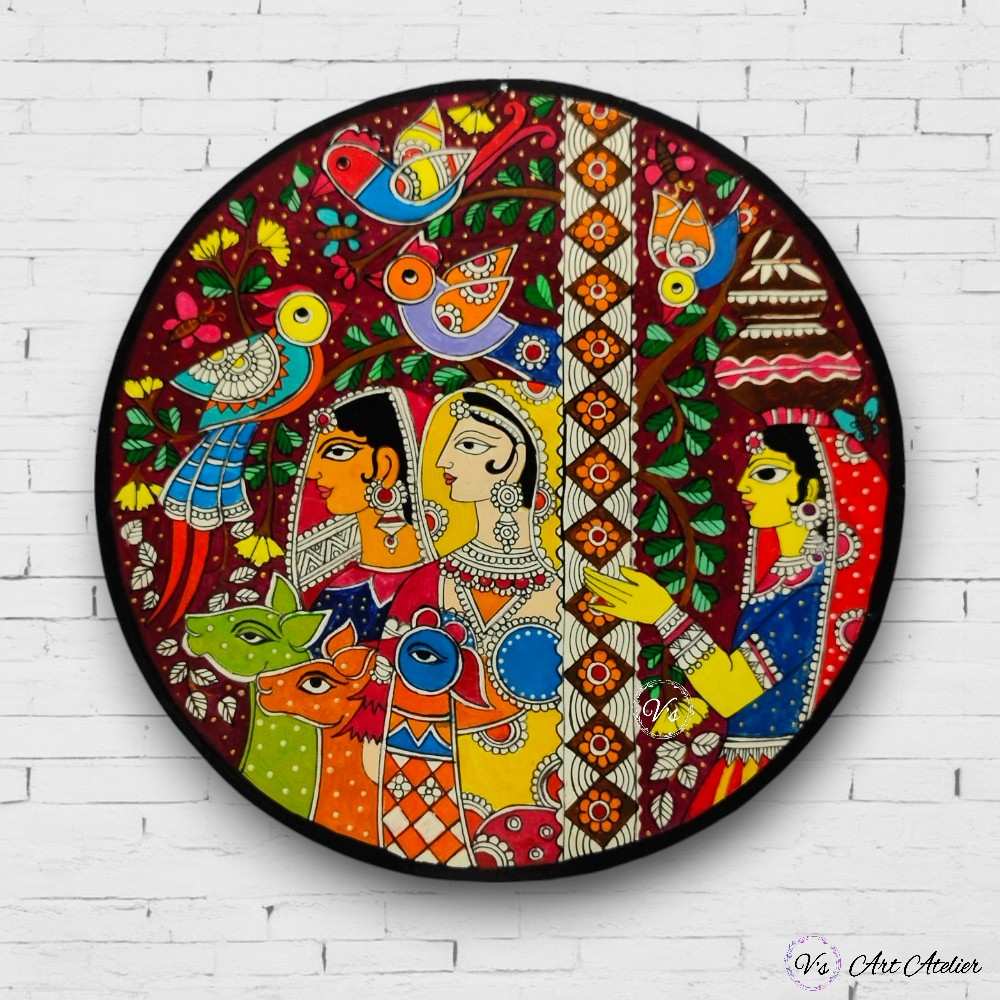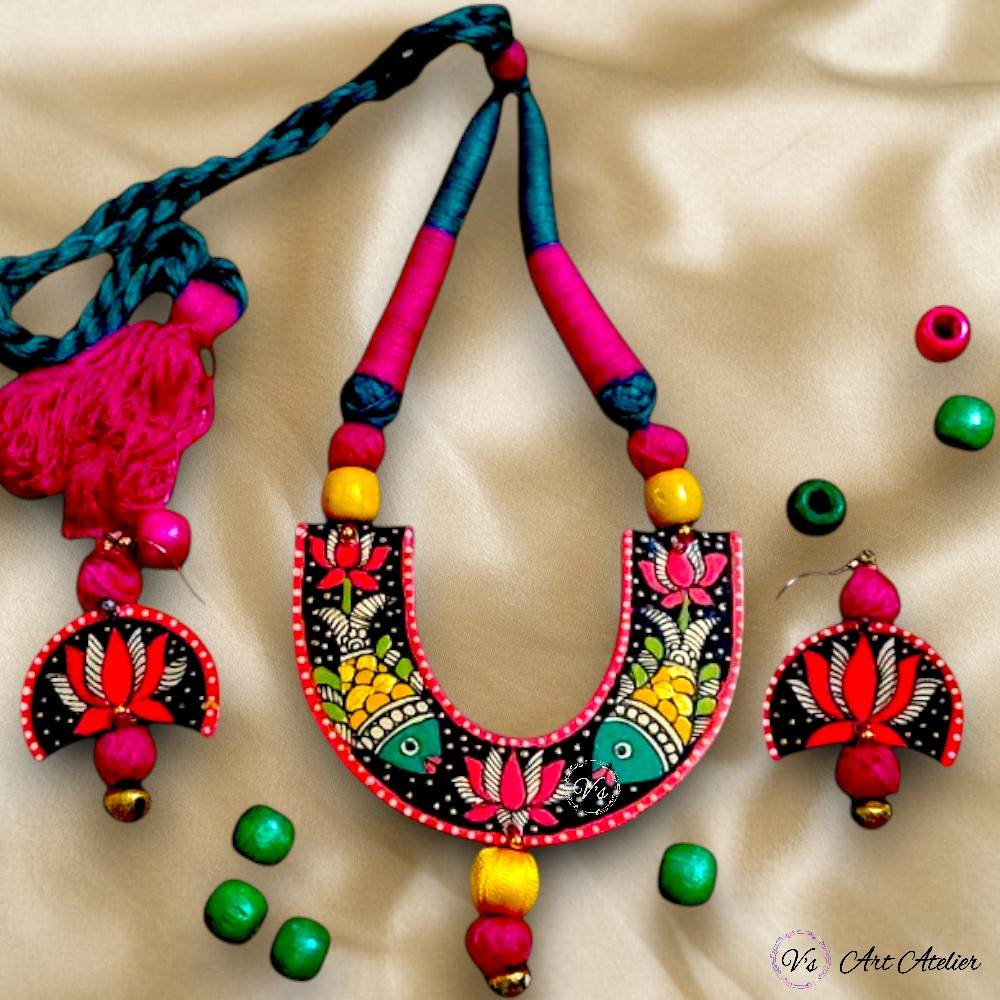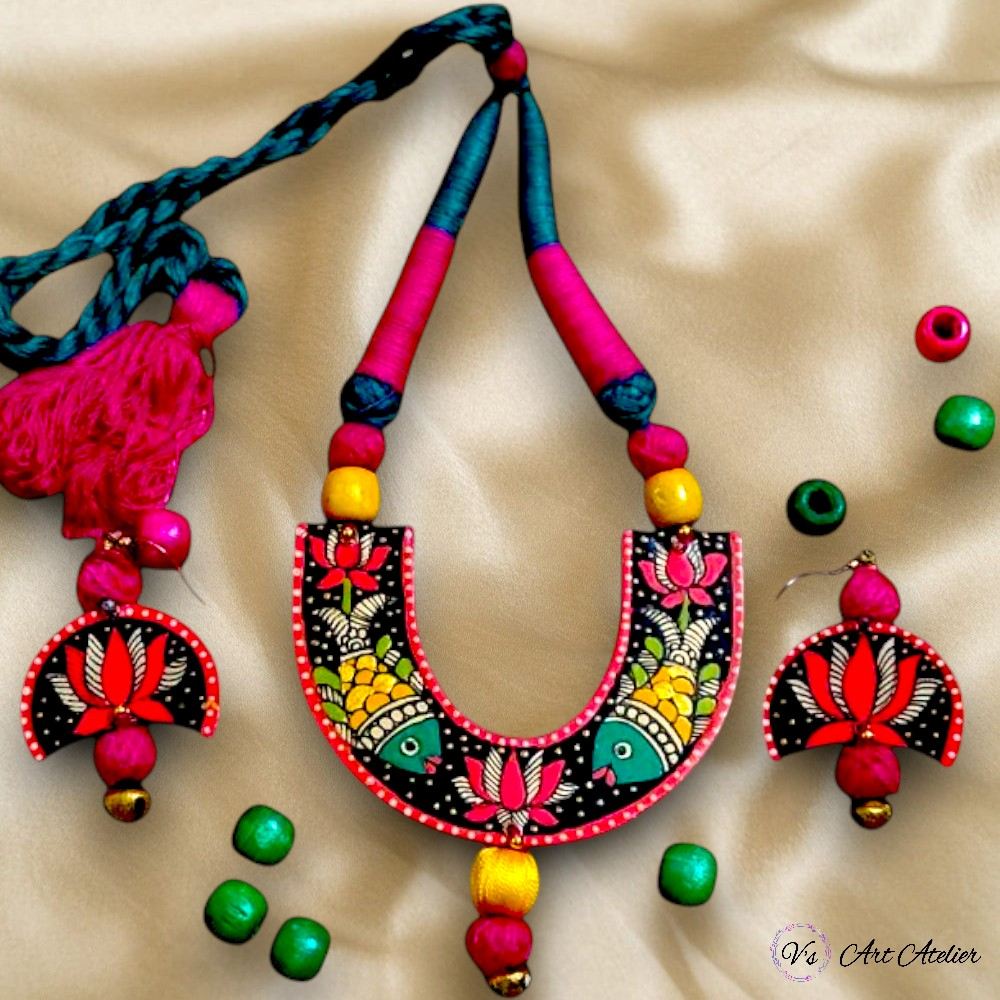Exploring Indian Folk Art Traditions: Madhubani, Gond, and Pattachitra
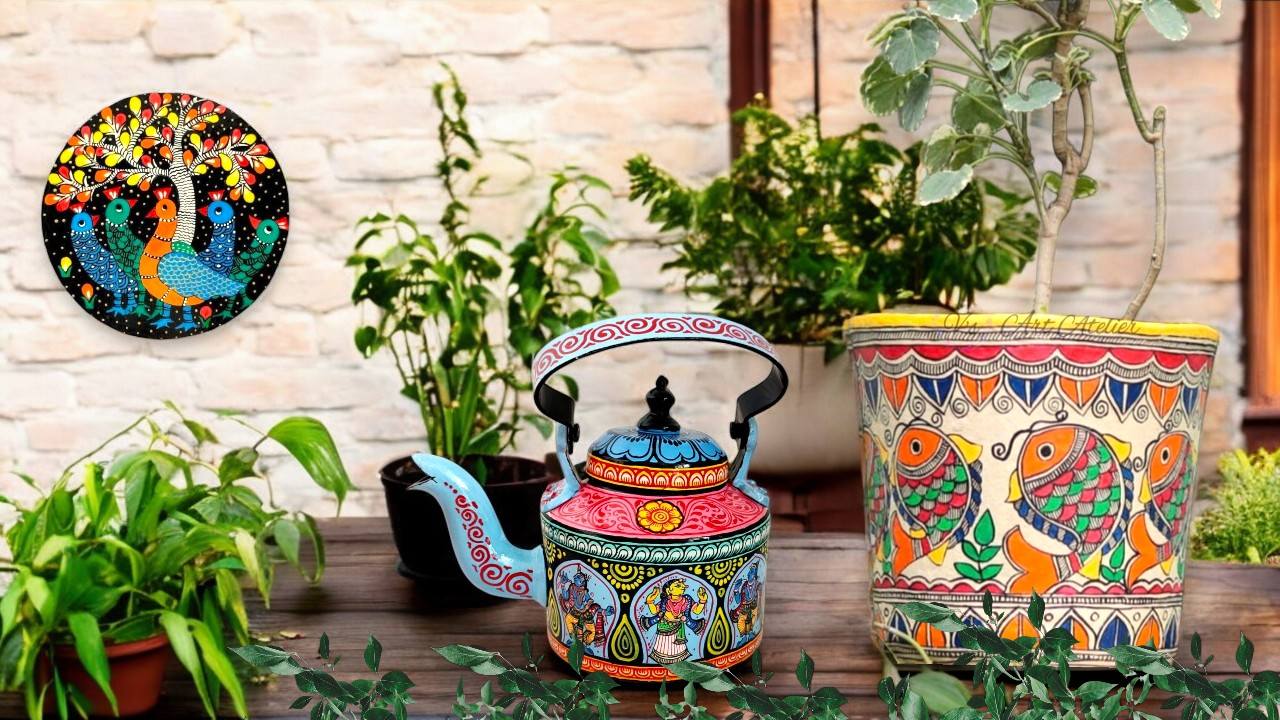
Exploring Indian Folk Art Traditions: Madhubani, Gond, and Pattachitra
India is a country of immense cultural diversity, and its folk art traditions reflect this rich heritage. Among these, Madhubani, Gond, and Pattachitra stand out for their vibrant storytelling, intricate designs, and deep cultural roots. These art forms are not only visually captivating but also carry centuries of history and symbolism. In this article, we’ll explore the origins, cultural significance, and modern relevance of these folk art traditions, as well as how they are reflected in contemporary products.
Outline

- Introduction to Indian Folk Art
- The Significance of Folk Art in Indian Culture
- Madhubani Art
- History and Origins
- Unique Features and Techniques
- Themes and Symbolism
- Cultural Relevance Today
- Gond Art
- History and Tribal Roots
- Distinctive Characteristics
- Nature and Mythology in Gond Art
- Modern-Day Adaptations
- Pattachitra Art
- Ancient Beginnings
- Style and Craftsmanship
- Stories Depicted in Pattachitra
- Role in Festivals and Rituals
- How Indian Folk Art Influences Modern Products
- Fashion and Textiles
- Home Décor and Handicrafts
- Digital Art and Merchandise
- Sustaining and Promoting Folk Art
- Conclusion
- FAQs
Introduction to Indian Folk Art
India’s folk art is a living testament to its cultural vibrancy. These art forms, passed down through generations, are often created by rural communities to depict everyday life, mythology, and religious rituals. Unlike classical art, folk art is more community-centered, evolving with time while retaining its traditional roots.
The Significance of Folk Art in Indian Culture
Folk art plays a crucial role in preserving local traditions and beliefs. These art forms are often tied to festivals, celebrations, and rituals, making them integral to community life. Beyond their aesthetic appeal, they are a medium of storytelling and a way to transmit cultural values across generations.
Madhubani Art
History and Origins
Madhubani art, also known as Mithila painting, originates from the Mithila region in Bihar. It is believed to have emerged around 2,500 years ago and was traditionally created by women on the walls of their homes to mark auspicious occasions.
Unique Features and Techniques
Madhubani art is characterized by intricate patterns and bold colors. Artists use natural dyes and pigments derived from plants, flowers, and minerals. The paintings are typically done with fingers, twigs, and even matchsticks, creating a distinctive, handcrafted look.
Themes and Symbolism
Common themes include Hindu deities such as Krishna, Rama, and Shiva, as well as nature motifs like birds, fish, and trees. Each element carries symbolic meanings—peacocks represent love, while lotus flowers signify purity.
Cultural Relevance Today
Madhubani art has transcended its rural origins and is now celebrated globally. It adorns everything from clothing and home décor to digital illustrations, bridging the gap between tradition and modernity. Many artists continue to practice this art form, keeping its legacy alive.
Gond Art
History and Tribal Roots
Gond art comes from the Gond tribe, one of India’s largest indigenous communities, primarily residing in Madhya Pradesh. The word “Gond” is derived from the Dravidian expression “Kond,” meaning green mountains. Gond paintings are believed to date back to prehistoric times.
Distinctive Characteristics
Gond art is distinguished by its use of dots and lines to create mesmerizing patterns. The paintings are often done on walls and floors using natural colors, later transitioning to paper and canvas.
Nature and Mythology in Gond Art
Nature is a dominant theme in Gond art, reflecting the tribe’s deep connection with their environment. Trees, animals, and birds are often depicted, along with mythological tales and folk legends. The vibrant colors and dynamic forms give the paintings a sense of movement and life.
Modern-Day Adaptations
Today, Gond art is gaining recognition in contemporary spaces. Artists are experimenting with modern media, creating works that resonate with both traditional art lovers and modern audiences. Gond-inspired products include stationery, home décor, and even fashion accessories.
Pattachitra Art
Ancient Beginnings
Pattachitra, meaning “cloth painting,” originates from Odisha and West Bengal. This art form dates back to the 5th century and is closely linked to the Jagannath temple in Puri.
Style and Craftsmanship
Pattachitra is known for its intricate detailing and mythological narratives. The paintings are done on cloth or dried palm leaves, using natural colors made from minerals and vegetables. The use of bold lines and vibrant colors creates a visually striking effect.
Stories Depicted in Pattachitra
Pattachitra often depicts scenes from Hindu epics like the Ramayana and Mahabharata, as well as stories of Lord Jagannath. Each painting is a narrative in itself, bringing ancient tales to life.
Role in Festivals and Rituals
During the annual Rath Yatra in Puri, Pattachitra paintings play a significant role. The tradition of painting chariots and temple walls showcases the deep cultural integration of this art form.
How Indian Folk Art Influences Modern Products
Fashion and Textiles
Indian folk art has found its way into the fashion industry, inspiring clothing lines that celebrate traditional motifs. Designers incorporate Madhubani, Gond, and Pattachitra elements into sarees, kurtas, and accessories, creating a fusion of heritage and style.
Home Décor and Handicrafts
Home décor products such as wall hangings, cushion covers, and lamps often feature folk art designs. These pieces add a touch of cultural elegance to modern interiors.
Digital Art and Merchandise
With the rise of digital platforms, artists are exploring new ways to showcase folk art. From phone cases to digital prints, these art forms are being reimagined for a global audience.
Sustaining and Promoting Folk Art
To keep these traditions alive, efforts are being made to support folk artists through exhibitions, workshops, and online platforms. Governments and NGOs are also stepping in to promote and preserve these art forms, recognizing their cultural and economic value.
Conclusion
Indian folk art traditions like Madhubani, Gond, and Pattachitra are more than just visual spectacles—they are windows into the country’s soul. Their vibrant colors, intricate patterns, and deep-rooted symbolism continue to inspire and captivate audiences worldwide. By integrating these art forms into modern products, we can ensure their preservation for future generations.
Hand Painted Pattachitra Bookends – Set of 2
Hand-painted Madhubani Muse Wall Plates – Set of 3
Hand Painted Lotus Madhubani Pendant Earring Set
FAQs
What materials are used in Madhubani art?
Artists use natural dyes, handmade paper, and tools like twigs and fingers to create Madhubani paintings.Is Gond art only about nature?
While nature is a dominant theme, Gond art also depicts mythological stories and tribal legends.Can Pattachitra be done on materials other than cloth?
Yes, Pattachitra is also done on dried palm leaves and wooden panels.How can we support Indian folk artists?
Buying authentic folk art products and attending exhibitions can help support artists.Are there any modern uses for these art forms?
Yes, folk art is now used in fashion, home décor, digital designs, and even corporate branding.
Product categories
Product categories
- Home Decor 134
- Dining and Kitchen 251
- Personalized Products 65
- Kids Corner 54
- Knick knacks 57
- Festive Finds 42
- Corporate Collection 41

